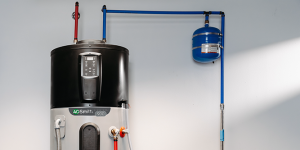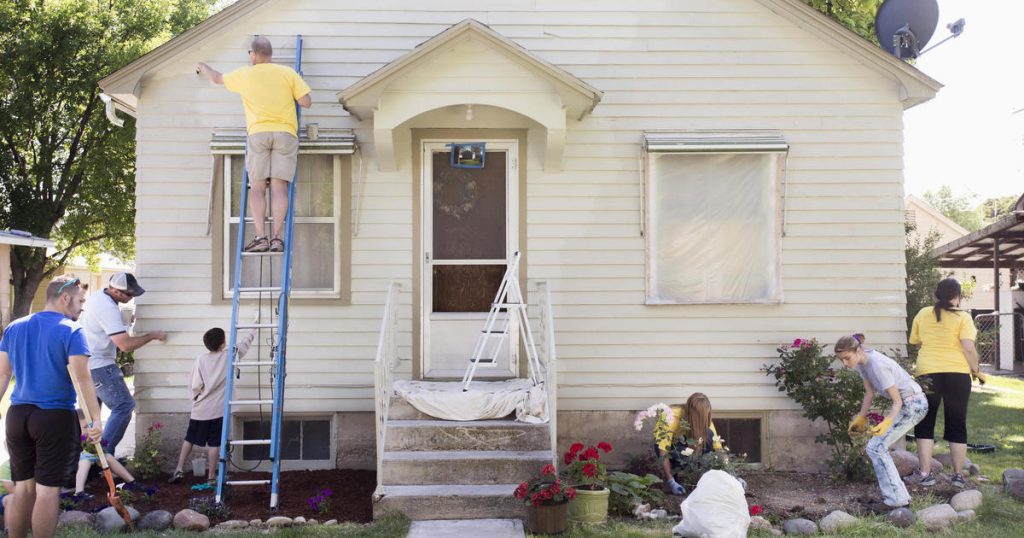Hill Street Studios/Blend Images/Getty Images
Warmer weather and sunnier days mean different things for different people. For prospective homebuyers, it means inventory is high and house hunting can commence in full. For existing homeowners, the spring and summer months mark a good time to complete major repairs and renovations, either inside or outside their homes.
While home values have been hurt by rising interest rates in some parts of the country, home values are still high in other parts. Homeowners living where values are high could be sitting on substantial amounts of home equity. They can use that equity to finance the repairs and renovations mentioned above – typically at a lower interest rate than most other forms of credit.
You can use home equity in multiple ways, with two of the most common methods being home equity loans and home equity lines of credit (HELOCs). We will break down both options in this article so you know exactly how to use your existing home equity to make household repairs.
You can easily check your eligibility and local options online right now.
How to use home equity to make home repairs
While you can technically use a cash-out refinance or reverse mortgage to finance home repairs, many experts recommend you explore your home equity loan and HELOC options. Here’s how you can use both:
How to use a home equity loan to make home repairs
A home equity loan works as a second mortgage in that you take out another loan from the existing equity you’ve built in your home. Most lenders limit you to 80% to 85% of your home equity, although different lenders may have different restrictions.
Just understand the amount of money in your home is different from the number of mortgage payments you’ve made. For example, let’s say you first purchased your home for $500,000. You have since paid off $50,000, but the value of your home has increased to $600,000. That means you can potentially get a home equity loan for $150,000 – not just the $50,000 you’ve invested.
Home equity loans have fixed interest rates, providing some much-needed predictability to your budget. Those rates tend to also be lower than what you may qualify for if you choose to finance your repairs with a personal loan or a credit card.
Why you should use a home equity loan to make home repairs
A home equity loan has a fixed interest rate, so you’ll have the same figure to pay back each month, regardless of any unfavorable market conditions. And if you use it for IRS-approved reasons, you may be able to deduct the interest you paid on the loan come tax-filing season.
“Interest on home equity loans and lines of credit are deductible only if the borrowed funds are used to buy, build, or substantially improve the taxpayer’s home that secures the loan,” the IRS says. “The loan must be secured by the taxpayer’s main home or second home (qualified residence), and meet other requirements.”
Research your home equity loan options online now to see if it’s right for you.
How to use a HELOC to make home repairs
A HELOC, like a home equity loan, utilizes the existing equity in your home to finance any expenses you may have. Unlike a home equity loan, a HELOC acts as a revolving line of credit similar to a credit card. You only borrow money when you need to and pay it back as you go. Because you’re not getting a lump sum of money, you’ll generally pay less interest on this form of credit than you would others. However, rates may be variable (unlike home equity loans, most of which are fixed).
There are two phases to a HELOC: the draw period (in which you withdraw money, lasting anywhere from two to 10 years) and the repayment period (when your ability to withdraw money ends and you must pay back what you owe on a predetermined timeframe).
Why you should use a HELOC to make home repairs
HELOCs, like home equity loans, can come with lower interest rates than personal loans or credit cards (assuming you have a good credit score and clean credit history). They also have a favorable interest tax deduction when used for home repairs.
“Generally, you can deduct the home mortgage interest and points reported to you on Form 1098 on Schedule A (Form 1040), line 8a,” the IRS says. “However, any interest showing in box 1 of Form 1098 from a home equity loan, or a line of credit or credit card loan secured by the property, is not deductible if the proceeds were not used to buy, build, or substantially improve a qualified home.”
Check out your HELOC options today to determine your eligibility.
The bottom line
Homeowners with elevated home values and significant sums of equity should consider forgoing credit cards and personal loans and instead turning to home equity loans or HELOCs to help finance needed home repairs. Both options have appealing benefits for homeowners and, unlike most other credit options, interest on home equity loans and HELOCs are tax-deductible if they’re used to make eligible home repairs, improvements and renovations.
Read the full article here














